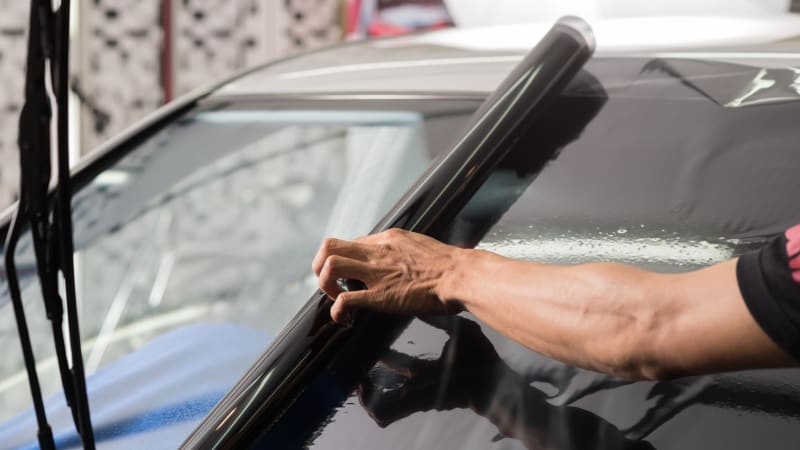How dark are you allowed to tint your front windshield
https://ift.tt/3bggJYN

Looking cool is good, and being cool is better. Car window tinting can get you and your ride a little closer to both. However, reducing the amount of light that comes through your car windows — especially your front windshield — defeats the purpose of using glass in the first place. While window tinting might not be as big of deal on side windows, laws vary by state on the degree of tint you can use on your front windshield.
Visible light transmittance (VLT) and compounding tint
Window tint is rated in Visible Light Transmittance, which measures the amount of light that makes it from the outside of the window to the inside of the car. A typical light tint allows 70 percent of the light in. A medium tint is about 20 percent, and a super-dark “limo tint” allows only about 5 percent of light through. Legally compliant VLT ratings vary from state to state, with the strictest states requiring 70 percent of the light makes it through the glass.
When choosing a legally compliant tint, remember that most modern vehicles come with glass tinted or dyed from the factory. This factory tint compounds with any tint you put on top. If your vehicle comes with a windshield tinted tinted at 80 percent VLT, and you put a 20 percent tint on top of that, you wind up with a final VLT rating of 16 percent. To find your total tint, multiply the percentages by the the other: .80 x 0.20 = .16 = 16 percent. Factory tint generally won’t be any lower than 70 percent VLT, but any amount must be accounted for when you purchase aftermarket tint.
The AS1 line
In almost all cases, no aftermarket tint is allowed below the front windshield’s AS1 line. If you look closely at the edge of your windshield about 5 or 6 inches from the top, you should see some kind of hash mark or line etched in it. It might even say “AS1” or “AS-1” in tiny script. If you can’t locate the AS1 line, flip your sun visors down until they touch the windshield. The bottom edge of the sun visor generally marks the AS1 line. If you don’t see a mark of some kind on the windshield, don’t assume anything. Get in contact with your vehicle manufacturer to find out for sure.
State window tint laws
No matter where your AS1 line is, you still need to know the tint laws in your state. There’s no Federal ruling on windshield window tint. It’s all handled state by state, and tint restrictions can vary greatly from one to the next. Most states allow darker tints on your windshield, as long as the tint is above the windshield’s AS1 line. In a number of states, the AS1 line doesn’t matter at all. Tint may only extend 4 to 6 inches from the top of the windshield, though it can often still be as dark as you like. Some states don’t allow any tint of any darkness or type on the windshield, at all. Others require a medical exemption for full or even partial windshield tinting. Only two states — Ohio and North Dakota — allow you to tint the entire windshield, but it has to be 70 percent or lighter. If your car was originally sold in either of these states, have the windshield’s light transmission checked before purchasing tint. It might have come from the factory or dealership with tinted glass or the darkest permissible aftermarket tint.
No matter where you live, find out your state’s specific tint laws before assuming anything. Sites like the AAA put together lists that lend a bit more transparency to your state’s window tint laws.
Auto Blog
via Autoblog https://ift.tt/1afPJWx
March 22, 2020 at 01:24PM
